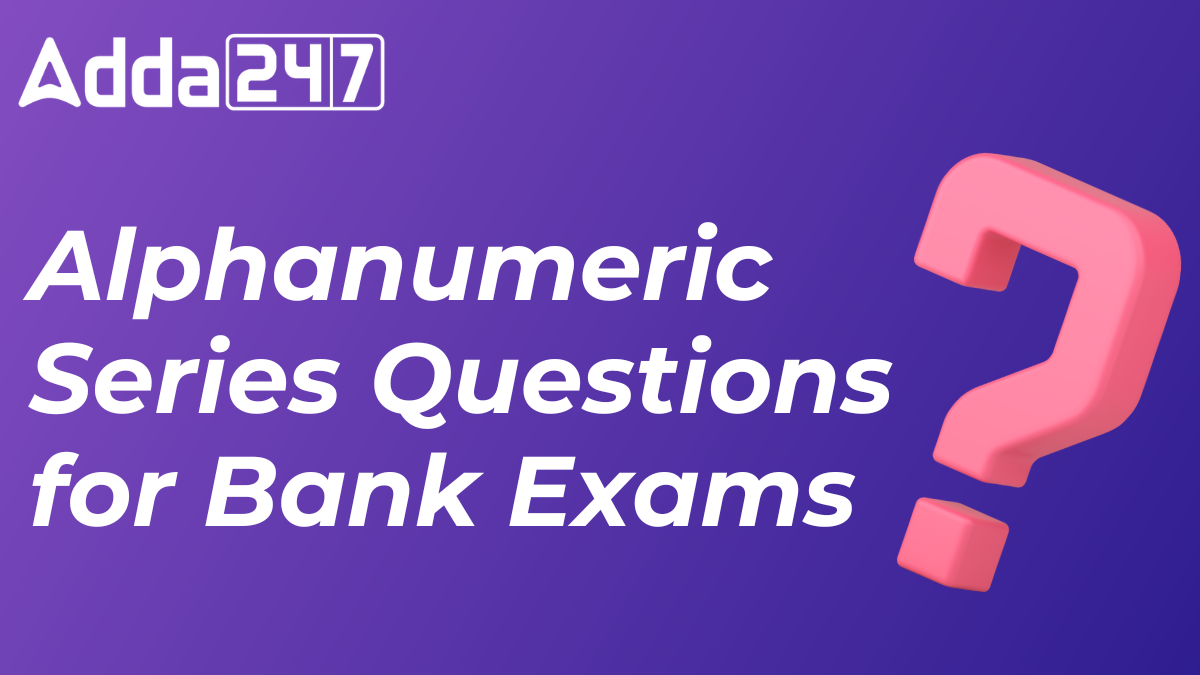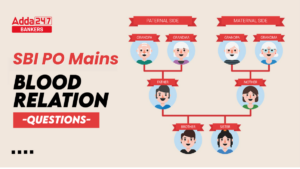Alphanumeric series questions for Bank Exams are a common component of bank exams, testing a candidate’s ability to identify patterns, sequences, and relationships between letters and numbers. These questions require logical reasoning, pattern recognition, and quick thinking. They can involve numbers, letters, or a combination of both, and can be categorized as number series, letter series, number-letter series, or mixed series. By understanding the types of questions and practicing regularly, candidates can improve their skills and increase their chances of success in bank exams.
Alphanumeric Series Questions for Bank Exams
Bank Exams test the speed and agility of the candidate. The alphanumeric series questions for bank exams include combinations of arithmetic and geometric progressions, or patterns that involve both numbers and letters more intricately. To tackle these challenging questions, candidates need to have a strong foundation in basic arithmetic and algebraic concepts, as well as a keen ability to analyze and identify complex patterns. Therefore when the candidate handles these types of questions strength in related domains can be easily tested.
Directions (1-5): Study the following arrangement carefully and answer the questions given below:
N 4 7 T U J K 3 % F @ © L N 5 P 1 8 U $ E 2 D C 6 # 9 Z Q 8 Y*M A
Q1. Which of the following elements is sixth to the left of the fifteenth from the left end of the given arrangement
(a) 2
(b) #
(c) %
(d) $
(e) None of these
Q2. How many such numbers are there in the given arrangement each of which is immediately preceded by a consonant but not immediately followed by a letter?
(a) One
(b) None
(c) Three
(d) Two
(e) Four
Q3. How many such symbols are there in the arrangement, each of which is immediately followed by a letter but not immediately preceded by a number?
(a) One
(b) Three
(c) None
(d) Two
(e) More than three
Q4. If we remove all the numbers from the given arrangement, then which of the following elements is 5th from the right end?
(a) Q
(b) T
(c) *
(d) #
(e) None of these
Q5. Four of the following five are alike in a certain way based on their positions in the given arrangement and so from a group. Which is the one that does not belong to that group?
(a) DC6
(b) @©L
(c) 9ZQ
(d) 5P1
(e) #MP
Directions (6-10): Study the following arrangement carefully and answer the questions given below:
3 1 2 5 4 7 2 8 4 5 7 1 9 6 5 2 4 1 4 5 8 2 4 3 9 7 6 9 4 2 3
Q6. Which of the following digits will be sixth to the left of tenth from the right end?
(a) 6
(b) 9
(c) 5
(d) 2
(e) None of these
Q7. How many 2’s are there in the given series which are followed by a number less than 6?
(a) One
(b) None
(c) Three
(d) Two
(e) More than three
Q8. What will be the addition of the fifth, seventh and tenth digit from the left end?
(a) 13
(b) 10
(c) 11
(d) 15
(e) None of these
Q9. If all the perfect square digits are removed from the given series, then which of the following will be fifth to the right or sixth from the left end?
(a) 5
(b) 2
(c) 8
(d) 1
(e) None of these
Q10. How many odd numbers are there in the given series which are immediately followed by a perfect square digit?
(a) One
(b) None
(c) Three
(d) Five
(e) Seven
Directions (11-15): These questions are based on the following alphabet and digit series.
D 5 P K L 8 Z M C I 6 O Q U E 1 T N R 4 G B A 9 F S W 2 H J V 7 Y X 3
Q11. How many digits are there in the above arrangement which is immediately followed by a vowel?
(a) Two
(b) Four
(c) One
(d) Three
(e) None
Q12. If all the vowels are deleted from the above arrangement, then which of the following letters/digits is 10th to the left or 5th from the right end?
(a) R
(b) 4
(c) G
(d) 9
(e) None of these
Q13. Which of the following letters/digits is 7th to the right of 13th from the right end?
(a) A
(b) 2
(c) H
(d) 9
(e) None of these
Q14. How many consonants are there in the above arrangement which is immediately preceded by a consonant and immediately followed by a vowel?
(a) Four
(b) Three
(c) Two
(d) One
(e) None
Q15. Which of the following elements is exactly between ‘B’ and ‘2’ in the given arrangement?
(a) 9
(b) F
(c) S
(d) W
(e) None of these
| Answers | |||||
| Q. NO. | Right Option | Q. NO. | Right Option | Q. NO. | Right Option |
| 01 | c | 06 | d | 11 | c |
| 02 | e | 07 | e | 12 | b |
| 03 | b | 08 | c | 13 | e |
| 04 | a | 09 | b | 14 | c |
| 05 | e | 10 | e | 15 | b |
| Related Posts |
|
| Alphanumeric Questions | Data Sufficiency Questions |
| Puzzle Questions | Seating Arrangement Questions |
| Coding-Decoding Questions | Input Output Questions |




 Important Blood Relation Questions for S...
Important Blood Relation Questions for S...
 Seating Arrangement Questions for SBI PO...
Seating Arrangement Questions for SBI PO...
 Inequality Questions for Bank Exams
Inequality Questions for Bank Exams




